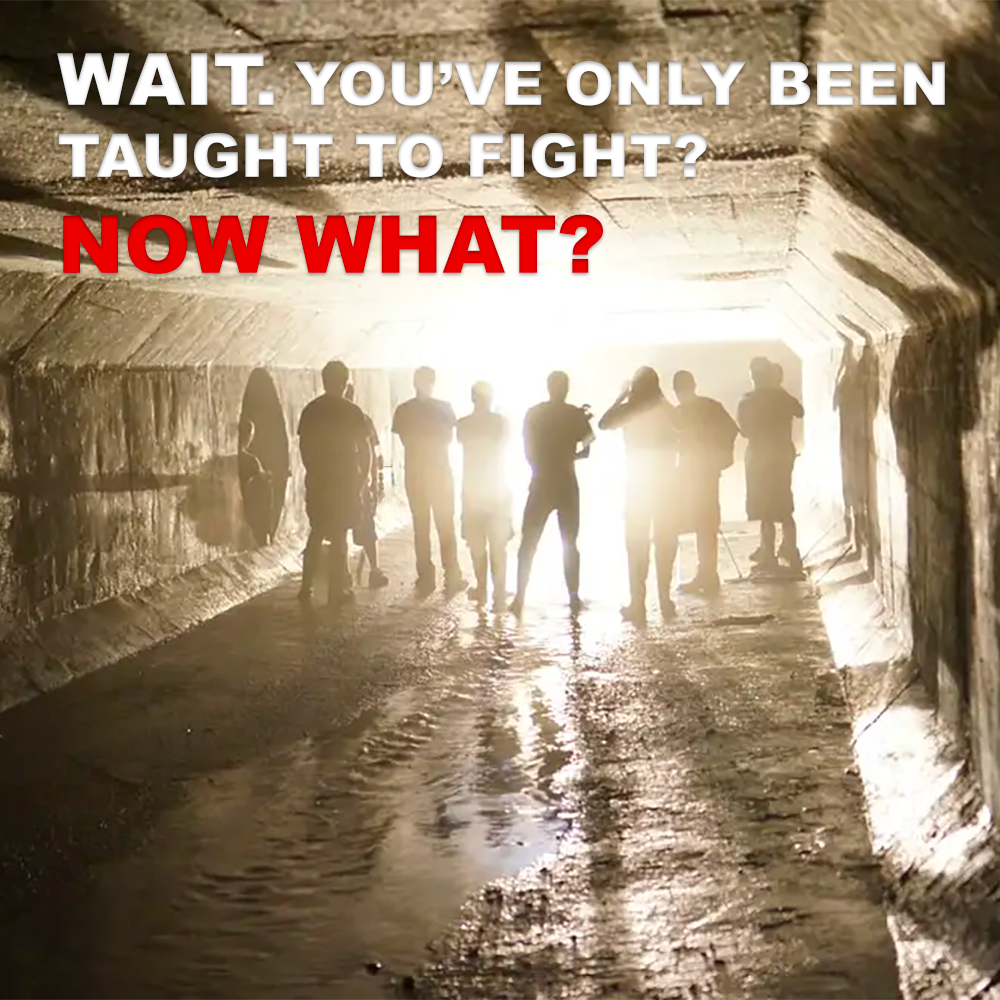
WAIT. You've only been taught to fight? NOW WHAT?
Posted by ADAM CARTER on MAR 09, 2023

WAIT. You've only been taught to fight? NOW WHAT?
A comment on one of my articles about ‘self-defense or fighting’ said that “if you’re young enough [snip] why can’t you do both? (self-defense and sparring)”.
Well of course, you can. You can do both provided you understand the differences and you are aware of the dissimilarities.
But it’s not wise to do sparring or competition with the view to increasing self-defense skills. Nor is it wise to train in self-defense with a view to improving your competitive skill. Training for the objective certainly makes more sense. Doesn’t it?
Sport is sport. Self-defense is self-defense. Both have their own inherent value.
I understand that some people argue that sparring or sport karate can develop useful attributes that could be used in self-defense. But my problem with this argument is that you can develop those attributes perfectly well without participating in sport karate.
Sport training is created to ensure success in sport. It makes little sense to train to develop one set of skills when they are not the skills you wish to actually attain. If you want self-defense skills, then you should be training those skills. If you want sporting skills, then train for those. Both are good and both have value.
Many of the comments I receive on my articles, talk about the fighting aspect of self-defense only. Therefore why not train both?
I have witnessed many sport karate dojo that tack-on so called “self-defense” techniques at the end of a class (most of these would fail anyway). This is not how to approach the subject.
This omits the essence and fundamental principles of self-defense which should be discussed, and are considerably more important, before any fight or fighting techniques are considered.
All combat sports are one-on-one fights with rules. Self-protection on the other hand is not consensual fighting in any shape or form, and should be approached differently.
If you are truly interested in effectively preparing to deal with criminal and civilian violence, then it’s not about fighting first….. and this needs to be UNDERSTOOD.
The martial arts has many styles and methods. There is not “one true path”.
The differences in practice and approach is what makes the martial arts so popular. Don’t get me wrong, now and again there is nothing like a fun sparring session. The trouble you have is when you try to make a single art or approach fit all objectives. It doesn’t work that way.
Combat sports, sparring, fighting in the dojo, while they may have some skills that cross over, they are not good solutions to criminal violence. Why? Because they are not designed to be.
Fighting ability is just one aspect of self-defense. It exists alongside other skills, such as; situational awareness, verbal de-escalation, escaping, weapons, personal security, protecting others, first aid, the law, etc. which many people unfortunately overlook. And many of those skills should come FIRST.
Everyday there are news headlines of people squaring off with an attacker thinking they can fight their way out of a bad situation. Most peoples skills fall way short of what is actually required.
In addition to the martial arts, I have worked for the Military, the Police Service, and I am a retired EMT, I have familiarity with fights, shootings, stabbings and worse. After speaking with many of the injured (the ones I could), they all had one thing in common….. they overestimated their fighting skills.
Experience has shown me that you will fight how you have trained. Under stress you will default to whatever actions you have spent the most time drilling in training. And if you’re splitting you time between two disciplines that have different fundamental skill sets and objectives….. now what?
This is why objective training and context, truly understanding the differences in training methodology, is vitally important. Get it wrong, train with the wrong objective, the wrong context, and the indecision you will experience, could kill.
With thanks to Iain Abernethy
